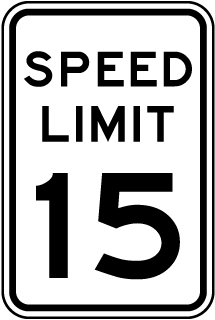I thought I would continue to try and have a substantive conversation with Dr. Bishop regarding her presentation to our legislative delegation, which as you can see from the note at the very bottom (chronology is bottom up – see below for some shortcuts) piqued my curiosity when I saw it referenced in a State Senator’s newsletter. I have appended the conversation save the last reply from her, which, because that reply removed the markup, made following the back and forth (more) difficult. Her last reply was,
Dear Mr. Grover,
Thank you for your thorough feedback.
I hope you have a nice holiday.
Cheers,
Deena Bishop
Apparently she now has me confused with a blue Sesame St character (OK, maybe that’s not all that unusual…) But will she respond to my questions or concerns? I think that is as likely as her setting up a meeting, don’t you?
There were a total of 6 notes. Click here for my initial e-mail. Click here for Dr. Bishop’s reply to that note (the second in the string). My comments on Dr. Bichop’s note (the third note) can be found here. I interlineated my comments to her reply, so her reply and my comments appear at the top in one message, here. My writing appears in Times New Roman, Dr. Bishop’s in Helvetica.
To: Dr. Deena Bishop
From: Marc Grober
On 12/14/17 2:42 PM, Bishop_Deena wrote:
Hi Mr. Grober,
Hello Deena – answers interlineated below…
You and I must meet.
Actually, we need not meet, though if you wish to meet I can certainly accommodate that. However, I don’t see you as taking steps to that end, do I, so I will assume that is just polite puffing? which you can dispense with as many people find it confusing. On the off chance you are serious you know where to reach me.
I do not think that we are necessarily that distant
on our desired outcomes for the education of students...
the details in our respective areas have some differences.
I don’t know that we have shared our “desired outcomes for the education of students”, nor am I sure what our “respective areas” are, let alone what you think the differences in those areas might be. Perhaps you could explain?
I do agree with some of your thoughts on preschool and
the universal access that Oklahoma has tackled.
Actually, I don’t think I shared any ideas on pre-school, though I inquired as to whether you promoted Oklahoma’s position on pre-school to the legislators, a question you seem not to have answered.
Many of their preschools are funded outside of the
k-12 system, even to private entities.
I am unaware of the sources for your claims. Perhaps you could share them?
On the other hand, there is ample documentation of the success Oklahoma had with funding public pre-school (see, http://sde.ok.gov/sde/files/ok.gov.sde/sde/Legislative%20Briefing%20PreK%20Program.pdf for State fact sheet), both in the press:
http://hechingerreport.org/why-oklahomas-public-preschools-are-some-of-the-best-in-the-country/
https://www.washingtonpost.com/news/wonk/wp/2013/02/14/is-oklahoma-the-right-model-for-universal-pre-k/
https://eyeonearlyeducation.com/2016/02/18/universal-pre-k-in-oklahoma-a-national-model/
http://newsok.com/article/5550751
https://www.cbsnews.com/news/oklahoma-offers-pre-k-model-for-nation/
https://www.pbs.org/newshour/show/seeing-success-conservative-oklahoma-banks-on-universal-preschool
and in the literature:
https://www.crocus.georgetown.edu/publications
[shared as I was not sure whether this aspect of education had been broached as an area of Board interest and as we were including the Board in our conversation, they should have some familiarity with the topic – though I am not suggesting that they did not have a background in this already]
I think this is a good thing.
I see private education below the endowed post-secondary level (perhaps with certain very elite exceptions such as Phillips Andover, Exeter, etc) as suffering from poorer staffing than public schools because they pay less, provide no workplace guarantees, etc. and my experience with private schools in Alaska underscores my impressions. What data do you have that suggest that private entities manage education well?
ASD does not have to be solely responsible for
all preschool education.
Perhaps not (though see my caveat above), however, by the time you impose the constraints necessary to ensure that the provision of services are comparable, you have rendered the private entity much more expensive (less affordable, I think you’d put it) and operating at a disadvantageous scale 😉
Partnerships, to me, is the key to solving this
community concern.
Partnerships can be successful when the partners bring something to the table. You have yet to suggest what that might be.
If I can offer a lower overhead and the private
owner agrees to pass this onto the customer, perhaps
more folks can afford quality preschool?
Which essentially ignores the likelihood that the private operator is providing an unacceptably poor program, or the cost would be in excess of what ASD could provide.
Unused educational space is there, parents are
looking for quality preschools they can afford,
and empirical evidence supports early learning benefits.
Again, you seem to have ignored the fact that there might be lots of demands for space in ASD schools, but for the fact that ASD has been shedding anything that suggests it might be outside its mission statement. You also seem to have dismissed any possibility that class size could be reduced if ASD moved people out of positions carrying water for the administration, to actually teaching.
Additionally the closest reading of the literature to date suggests that the benefits of Pre-K dissipate if instruction in K-3 doesn’t maintain the pace the child experienced in Pre-K, which commends, of course, smaller elementary class sizes, AND an argument to legislators to fund Pre-K (which I will note, again, you appear NOT to have made).
On the NAEP front---2015 data is actually quite recent
as NAEP is only given every other year to randomly
selected students in randomly selected schools across
the state and nation. We do not get individual student
or school results for the NAEP. And, to be honest,
PEAKS results mirror AYP results more than either
of these assessments mirrored the SBA test of yesteryear.
My argument with the delegation was that we get
it...we get that the standards have changed and we
are addressing this. It was not a self-congratulatory
action. It was intended more for transparent accountability
on my part. No excuses here.
I am not going to duel about the specifics of NAEP testing – that is all of record for anyone to see. Nor am I going to argue about the significance of AYP testing on its own or vis-a-vis the NAEP, as that is also a matter of broad discussion in the literature as I said before, and I am sure you have provided the Board with an extensive bibliography on same. My point was that the Education Next piece was of little value; a better demonstration would have been State longitudinal data, and even that is of attenuated value because it is really not comparable to Alaska Urban data as many have been at pains to point out to the likes of the ideologues at Alaska Policy Forum and their fellow travelers.
If your intent was to demonstrate that we are between a rock and a hard spot, you frankly failed as that was not the message that was passed on. If your intent was to differentiate between the urban performance and rural performance, again, you seem to have failed. And I would have thought it would have been a great opportunity for you to share your correspondence to NAEP decrying their failure to include Anchorage in their Urban assessments, and I take it that in this too, you failed. Of course, failing is the only way we really learn, though I don’t know too many employers who see it that way…
The SAT/ACT scores were presented in a Fast Facts
sheet for ASD, available to all stakeholders.
I did not present personally on this topic. I have
included the data in the fast facts in this email.
So, this was simply more second hand hash. In as much as it was expected that scores on SAT and ACT would drop across Alaska takers as State requirements forced more who would otherwise NOT take the tests to take them, it would have seemed appropriate if talking about school performance to trot out such data as it is some of the on;y data that compares apples and apples we have. SInce I have not seen the presentation I can’t really comment on how it was targeted, of course, but I do have to wonder why real data on such a measure was not included on any discussion of legislative priorities for the District. Perhaps, should you make that presentation available, I could comment further?
I do have each school's national percentile score
and will request these data also be available on
the Data Dashboard as you have a good point
in that they are not easily accessible.
Please advise when the data is available.
As long as we are talking about data, I should note that I had been trying to have a conversation with ASD about concussion, TBI, and sports, and had been told (2 years ago) that a committee would be formed (I even received an invite) to look into this matter (action supposedly delayed due to staffing). The staffing issue was resolved months ago, but apparently the new staff member chooses not to respond to correspondence.
In the meantime, conversations with a Board member about the data pertinent to the Middle College suggested that the member had asked for data, and yet months have passed and the member seems to be as unable to obtain data from ASD as I am, though I don’t want to put words in the members mouth…
And it seems when schools jumped on DIBELS, their successes with that tool were ignored when ASD moved to AIMSweb. Now I am hearing rumors that AIMSweb is no longer required, thereby foregoing critical data. Is there an ASD white paper on the history of probe adoption and implementation at the district which includes a section on the current tools, their relationship, if any, to prior tools, and the analysis behind any changes?
Thanks again for your thoughtful responses. They do make me step back and think.
I thought that was the entire purpose of conversation (and the reason I was black-balled from ever working at the District, lol).
Tell me, when a student complains that a teacher is spending so much time lecturing students on how to use technology the teacher wants to use to teach that he isn’t effectively teaching the underlying lesson, what does that tell you about what is (or is not) appropriate Ed Tech? Don’t be a tool; use the tool 😉
A Shifty Solstice, a Yumpin’ Yule, and a Scandolous Saturnalia to you and yours,
Marc
—–Original Message—–
From: Marc Grober [mailto:marc@interak.com]
Sent: Thursday, December 14, 2017 11:33 AM
To: School Board <SchoolBoard@asdk12.org>
Subject: Re: Questions from the Trenches
Dear Dr. Bishop,
Thank you for your interim response.
I fully understand the issues with most State AYP assessments as compared to the NAEP, as I clearly noted. I don’t understand why anyone would rely on an out of date Education Next article to address this point when it has been the subject of extensive academic discussion for some time, especially because of the nature of the NAEP as opposed to that of most AYP assessments vis-a-vis the scope of the assessment.
“Yikes!”, is not an argument in any company I know. It is an exclamation of horrified amazement, used here because the Senator apparently came away with the impression that confirmation by way of an out of date article in a political journal that an assessment abandoned by the State years ago found some agreement with long standing NAEP results, that Alaska students are far from proficiency, was a basis for self-congratulation.
More importantly, the message apparently received by the Senator seemed to be missing a longitudinal analysis with respect to the testing Alaska has done. In other words, to be blunt, had someone simply compared findings of proficiency from State AYP testing with that afforded by NAEP testing annually for the last decade that would have very simply evidenced the gap, and done that without confusing anyone. Let’s just say that I am intrigued by the fact that the Senator didn’t share the graphic your staff prepared with respect to such an analysis; can you tell us where we can find it? I certainly agree that it is high time to recognize that the State is a long way away from being able to demonstrate adequate long term proficiency on basal standards; the problem is demonstrating to legislators that increasing revenues will change that, and that NAEP testing pressnts an appropriate standard. Those bits seem to be missing, not to mention the fact that the NAEP mysteriously failed to include Anchorage in its urban testing results, and a discussion of why that might have been, and whether NAEP is going to correct that oversight.
In sum, I would have expected any such presentation to cover the challenges presented by the State’s approach to education, and the marginal successes the local District can show despite those State-wide issues. Perhaps the easiest way to get to the bottom of what you did present is to make your presentation public on the ASD web?
As to private pre-school use of ASD facilities: a) If you rent such facilities for less than the market value you are indeed wasting ASD assets, no matter your inventive approach to finance. b) Scalable is not synonymous with affordable, this does not present an viable argument that the private sector can provide appropriate instruction at a lower cost (which seems to be what your argument is intended to imply), and ASD could always actually reduce the size of Kindergarten classes if ASD chooses to spend money on teachers, instead of on activities, administrators, special projects, and unused curricular materials. c) The community has been busy hemorrhaging services to meet budget constraints for two decades. Did you suggest to the legislators that, as in places like ultra-conservative Oklahoma, it is high time that Alaska offered free universal pre-school, and that in light of the State budget restrictions on communities like Anchorage, it is grossly unfair to expect such communities to subsidize pre-school themselves? Apparently the Senator missed that bit too.
I am pleased, however, that this is just something your highly paid staff is investigating, and hope, like some of the bizarre schemes floated by your predecessor, this idea gets short shrift. I would suggest (AGAIN) that the District roll out the Budget Review Team system; I think that would go a long way to affording the District “community resources” as far as appropriate ways to spend educational revenues.
The ACT/SAT data should be easily accessibly via the portion of ASD’s web site addressing assessment, and for someone who has argued that decisions will be data driven, it is confusing at the least to have to ask to see what was provided to legislators. Unless, like the release of a new iphone, there is some benefit to keeping close wraps on such presentations, it would sem that the best policy is to develop and public the presentation, and then use that as a basis for discussion with legislators or whomever, as opposed to engaging in apologetics about what you believe actually happened. Thank you for your reply. It is unfortunate that so many of your staff are not as responsive.
Marc
On 12/13/17 7:45 PM, Bishop_Deena wrote:
Hi Mr. Grober,
Thank you for your feedback. I want to clarify a
few items you mentioned now and will get back
with you on others, once I can locate the data.
1. Preschool---In this area, ASD is looking
to broaden the opportunities for preschool
in our community. We are presently using grant
money to provide pre-schools in some of our
schools. However, this does not meet
all needs as presently there remain families
who cannot afford quality preschools.
At this same time, ASD understands that
having preschools wrapped into our overall
k-12 programs is not scalable (not affordable).
In our effort to increase the readiness for
kindergarten learning and not wanting to
increase our costs, we are looking at innovative
ways to increase the access to preschool.
We partner with private preschools presently for
training. Given some schools' space availability,
we are investigating the idea of partnering
with private preschools to offer programs in schools
for students from low income families. We are
essentially not looking to "give away assets,"
rather use the assets we have to bring value to
our community. I realize nothing is free,
nothing is being given away. We are in talks
to see how we may rent space to offer a service
that is needed by the community---this would
support the private sector as well. These ideas
are working in other cities, so the investigation
was an effort to be innovative with the empty
spaces in some schools.
2. The Education Next map URL you shared demonstrates
the grade on STANDARDS, not assessments. The results
of assessments are used to communicate the delta
between the NAEP and individual state's assessment
results in an effort to define rigor. While Alaska
has much to improve, the idea shared with the
Senator was that we have standards that are of
higher rigor than before. While our coefficient
is still negative, it is closer than many states'
results for which their state assessments found
more students proficient than NAEP found. Again,
Alaska's score is much closer, meaning we are
more accurately reporting and that our standards
are coming closer to the overall national expectation for
student success. I did not share this to communicate
we are doing well on these new standards. That
would be untrue. In fact, I shared the poor PEAKS
results for ASD in this presentation to show we have
significant improvement to make.
I shared the map to demonstrate that the rigor of
standards in Alaska changed, and we did step things
up. Moreover, the ASD Board expects me, the superintendent,
to foster our culture and actions to meet the higher
standards. I am not sure about your "yikes" argument.
Are you unhappy that we acknowledge the challenge?
3. I will get the ACT and SAT information for you.
It is shared directly with the District.
Thanks again for your feedback.
Cheers,
Deena
Dr. Deena M. Bishop
Superintendent, Anchorage School District
5530 E. Northern Lights Blvd.
Anchorage, AK 99504
Office Phone (907) 742-4312
Educating All Students for Success in Life
—–Original Message—–
From: Marc Grober
Sent: Wednesday, December 13, 2017 5:18 PM
To: School Board
Subject: Questions from the Trenches
Dear Anchorage School Board and Superintendent,
I was rather dismayed recently to receive a newsletter from Senator Gardner which featured the following statements:
Tuesday, the Anchorage School District (ASD) and School Board presented their 2018 legislative priorities to Anchorage legislators, highlighting advancements in education, cost-efficiency measures, and difficulties their organizations currently face. I sensed a lot of optimism from the district, conviction that they are moving in the right direction, and genuine pride from the new superintendent, Deena Bishop.
Over the last five years, Alaska has gone from 48th in academic rigor to 13th in the nation, SAT and ACT scores have risen city-wide (and are now well above average nationally), graduation rates have increased in nearly every demographic, and student attendance – a focus in every school – is up across the district. I’m also excited that ASD is beginning to offer space inside their schools at a below-market rate for private pre-K programs. This will provide increased access to pre-K at an affordable rate – a great incentive for parents to start their kids in their neighborhood school before Kindergarten, resulting in the need for fewer resources once they enter the public school system.
I wrote to the Senator inquiring as to the basis for these claims, and I am somewhat distressed at the results of my queries and hope that you can provide specifics as to what the Senator was actually referencing. First off, I had to ask myself about Education Next (the Senator said the claims were based on this link http://educationnext.org/state-standards-map-2016/).
Education Next “is a scholarly journal published by the Hoover Institution” [http://rightweb.irc-online.org/profile/hoover_institution/ Hoover has been a mainstay of the Republican Party for decades, serving as a virtual revolving door for high-level GOP figures and apparatchiks, including many who served in the George W. Bush administration] which does not spare its own elbows in describing itself like this: “In the stormy seas of school reform, this journal will steer a steady course, presenting the facts as best they can be determined, giving voice (without fear or favor) to worthy research, sound ideas, and responsible arguments. Bold change is needed in American K-12 education, but Education Next partakes of no program, campaign, or ideology. It goes where the evidence points.”
This publication did a story in the Summer of 2016 (yes, a year and a half ago) in which they presented an interactive map that compared State AYP test results with NAEP test results. Of course, everyone in education has understood for years that very few states had AYP results comparable to NAEP proficiency. That map, produced a year and a half ago, is the map that the Senator was apparently referred to by the District. Yikes!
“Rigor” is defined in the map’s fine print: “This number shows for a given state in 2015 the difference in the percentage of students who were labeled proficient on the state exam and NAEP (National Assessment for Educational Progress). A negative number indicates that more students were identified as proficient on the state exam than were identified as proficient on NAEP”
The piece that references the map can be found here: http://educationnext.org/after-common-core-states-set-rigorous-standards/
Is this something for ASD to crow about. Absolutely not. As I wrote to the Senator:
“Education Next’s use of “rigor” means that if Alaska lists only 30% of its students as proficient on its exam, and its performance on NAEP reflects the same thing, then the lack of gap is regarded as effective rigor.
* This is a very artificial measure and it would be more appropriate to suggest that the metric might reflect reliability or validity of the NAEP or local measure, as opposed to rigor,
* Our coefficient is a negative number, which still shows our measure as being more “lenient” than the NAEP.
* This is at best a measure of our curriculum and testing regime, which so many want to see abandoned.
* Perhaps most importantly, the data employed are data on assessments THAT HAVE BEEN ABANDONED. In other words, anything Alaska could do to claim that State assessments were now consistent with NAEP assessments were dumped with the adoption of PEAKS.
Nothing to crow about here… So please explain why this was even trotted out to the Senator?
What about the relative performance on SAT and ACT? The Senator said that the data was provided by the testing corporations, but of course the data was not provided to the Senator, it was provided in some form, subject to certain conditions and limitations to the district. I looked at the District’s assessment web pages and could find nothing specific offering a link to the data in question. Where can the public find the data that the District is supposedly relying upon?
Lastly, how can we afford to rent out space to the public at lower than market value to provide services that the District could arguably do better? I failed to notice the sign at the time. You know, the one that said, “ASD giving away assets – sign up here!” I am a vocal supporter of public education, but it seems that ASD simply wants to fuel the fires of the Alaska Policy Forum and their ilk. What exactly is the cash loss ASD is suffering from the reduced rentals of these resources, and where is the policy analysis that finds that this giveaway is more important, for example, than providing reduced cost rentals to adult literacy programs, critical to student success, or parenting classes for that matter? Are the discounts available to any enterprise, or just for for-profits? Since we killed community schools largely on the rental loss to ASD, why not bring community schools back if ASD has so much money? Oh, wait! What about ASD offering a District wide Pre-K?
I really look forward to your reply, though based on your prior track record, I understand that answering difficult questions from the community has not been a focus of this administration.
Sincerely,
Marc



 rtial reversal of Rowley, it was applied in Endrew F. v. Douglas County School Dist. RE–1, 580 U.S. ____ (2017). You cannot have equality of education where you are segregating populations, and that applies to the entire gamut of actual (or perceived) differences.
rtial reversal of Rowley, it was applied in Endrew F. v. Douglas County School Dist. RE–1, 580 U.S. ____ (2017). You cannot have equality of education where you are segregating populations, and that applies to the entire gamut of actual (or perceived) differences.

